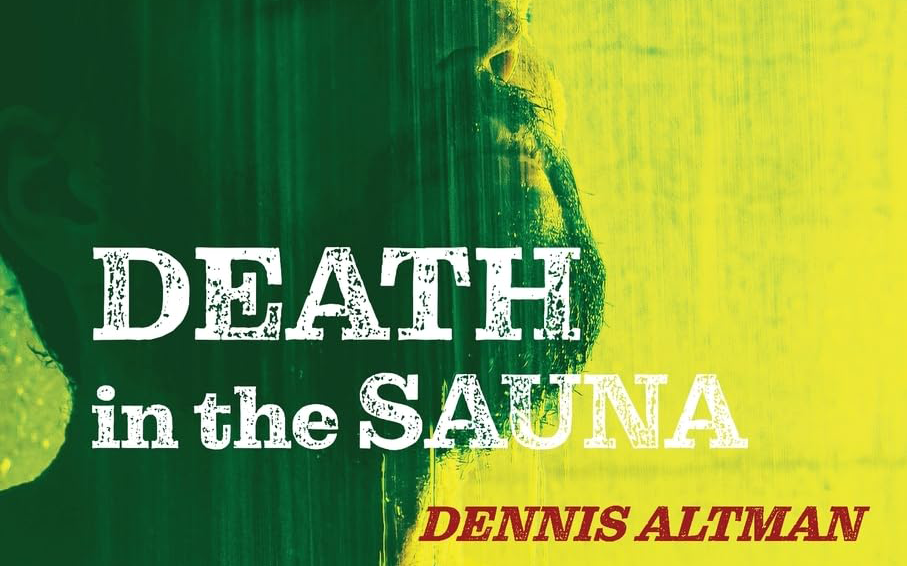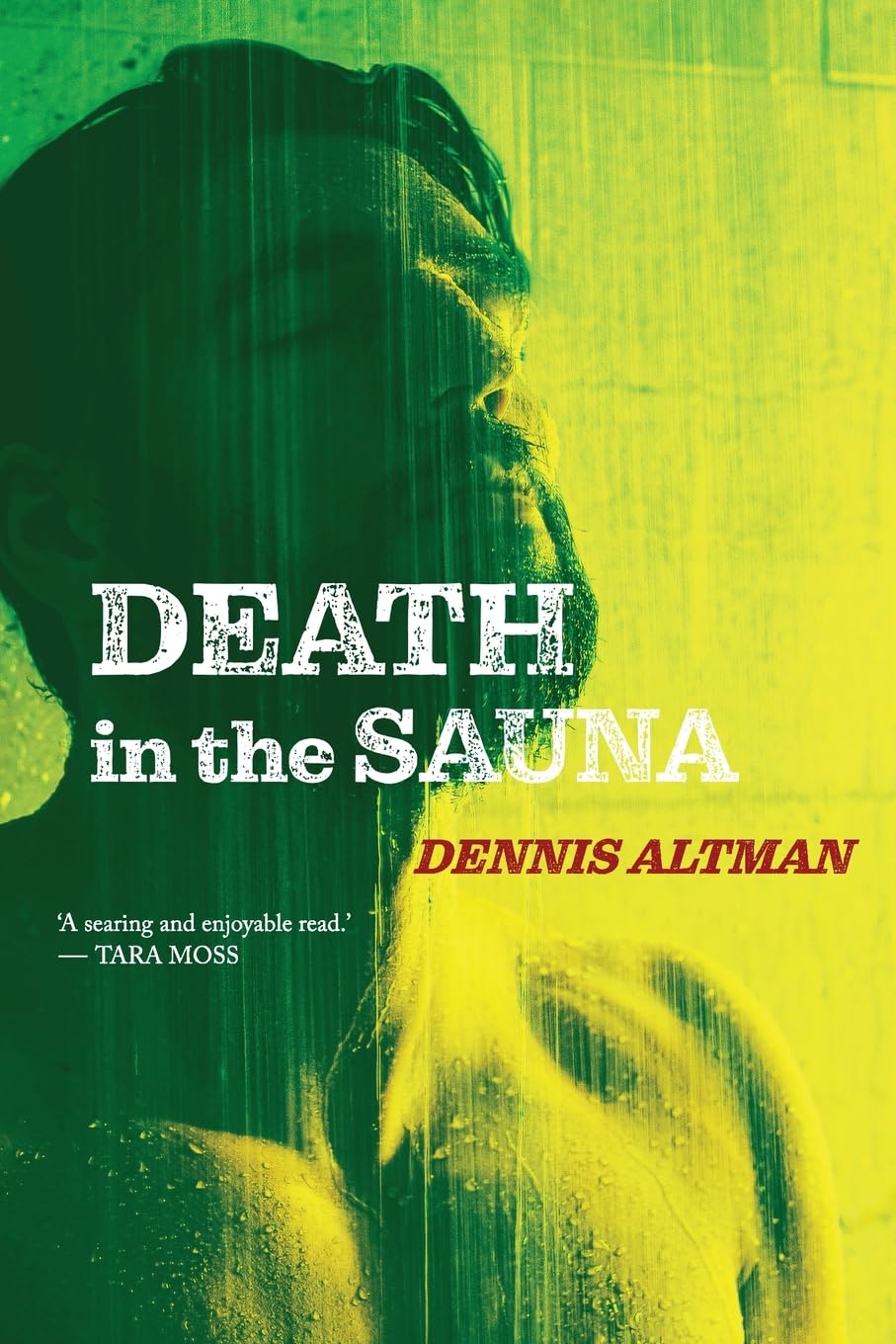
- Free Article: No
- Contents Category: Fiction
- Review Article: Yes
- Article Title: Conference-ville
- Article Subtitle: Dennis Altman’s steamy second novel
- Online Only: No
- Custom Highlight Text:
Dennis Altman’s new novel, Death in the Sauna, begins with, yes, a death in a sauna. The respected virologist Pomfrey Lister is found lifeless in a London gay venue, days before a major AIDS conference that he is chairing. His naked corpse is transported home and a death certificatepronouncing natural causes is produced. This hasty denouement is ostensibly aimed at concealing the salacious nature of Lister’s demise, which might overshadow both the conference and his legacy.
- Featured Image (400px * 250px):

- Alt Tag (Featured Image): Jay Daniel Thompson reviews ‘Death in the Sauna’ by Dennis Altman
- Book 1 Title: Death in the Sauna
- Book 1 Biblio: Clouds of Magellan Press, $32.99 pb, 205 pp
- Book 1 Cover Small (400 x 600):

- Book 1 Cover (800 x 1200):

Death in the Sauna is the second novel written by Dennis Altman, a leading international researcher on gay rights and the politics of HIV/AIDS (his first novel, The Comfort of Men appeared in 1993). The new novel owes much to Agatha Christie, whose works appear repeatedly in conversations and on the shelves of the second-hand bookstore that Noel manages. There are other pop-culture references; the controversial 1980 film Cruising receives a few nods, as does the notoriously homoerotic epic Spartacus (1960).
Altman evokes a fine sense of dread and danger, best encapsulated in lines such as ‘sometimes it’s better not to know too much. It can only get you into trouble’ and ‘No one benefits if you keep asking questions.’ This wariness suggests the existence – and perhaps tacit acceptance – of dastardly doings unfolding beneath respectable (and not so respectable) surfaces.
Altman also displays a talent for tonal and locational shifts, which sometimes occur in tandem. The novel cuts seamlessly from fleshy nightspots to bland back offices, from half-empty pubs to buzzing conference halls, and, of course, saunas. The events play out in summer, allowing for a sultry, even suffocating atmosphere.
The question of ‘whodunit’ is genuinely unclear until the final pages, and this keeps the reader on their toes. Though it’s the revelations about the characters along the way – their grudges, personal demons, hidden agendas – that amplify the tension and drive the plot. The concluding chapter (fortunately brief) is dull and superfluous, contributing nothing to the novel.
Death in the Sauna displays a keen eye for social observation. The novel is set in 2003, which is not historically distant from the 1980s AIDS outbreak; the activism of several characters is fuelled by their still-fresh memories of ‘watching young men die with excruciating illnesses’. By 2003, though, there had been medical advances and a cooling of the initial hysteria surrounding the virus. Perhaps it’s these factors that prompt one person to speculate, with equal parts naïveté and arrogance, whether ‘this AIDS thing’ is over.
The eye for social observation is apparent in descriptions of the conference that serves as the novel’s centrepiece. ‘Minor Royalty was preceded by a dance troupe from West Africa and an aging Hollywood celebrity, who spoke in mystic terms of love and compassion …’
This reviewer chuckled when he read about the conference dinner speaker who was ‘invited because she had written an essay which was widely believed to be about AIDS, although she never uses that term’, and who spouts platitudes like: ‘If we do not feed the spirit … what point is there in feeding the body?’ This is a deliciously sly jibe about the absurdity of intellectual celebrity worship.
Perhaps unsurprisingly, given Altman’s scholarship and activism, the book displays a non-judgemental attitude to sexual diversity and exhibitionism. This is a novel where public sex is an everyday activity and the line separating ‘homosexual’ and ‘heterosexual’ is opaque. The lack of judgement only highlights the problems of sexual conservatism, as suggested in lines such as the following, from Mary: ‘If we can stop promiscuity, we can stop the spread of HIV.’ Mary, incidentally, is sketched with sensitivity and nuance; she is not the cartoon villain that she might have been in another writer’s hands. The characters that populate the book are believable.
Death in the Sauna would have benefited from more careful scene-setting and corresponding adherence to the ‘show, don’t tell’ maxim. Consider the following:
[Pomfrey’s] cremation took place on a grey morning in Kensal Green, one of the city’s oldest cemeteries and resting place of writers such as Thackeray and Trollope. Because it had been arranged in haste only the larger chapel was available, which just emphasised how few people showed up.
This is clear but staid, more redolent of a travelogue than a suspenser. This reviewer wondered how enthralling such passages would have been had the sights, sounds, smells and yes, the histories, been more gradually unfurled. The most compelling fiction is that which provides the readers with the details necessary to imaginatively (re)construct the narrative world.
Death in the Sauna is suspenseful and engrossing. While there are shortcomings, there is also much to entertain the crime buff and the queer fiction fan. Dennis Altman provides some wicked laughs along the way.


Comments powered by CComment